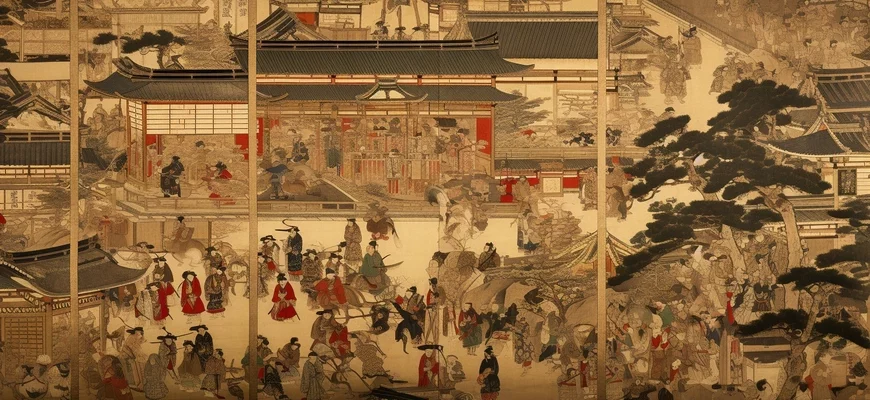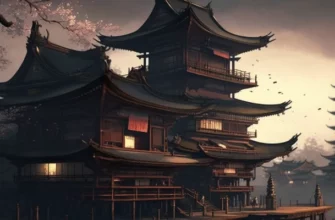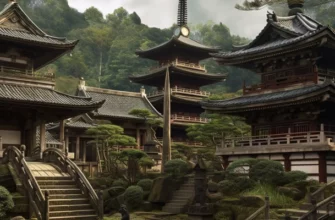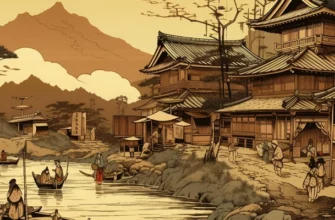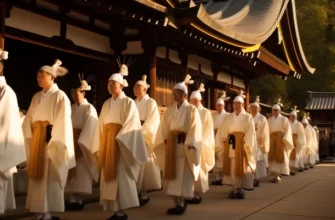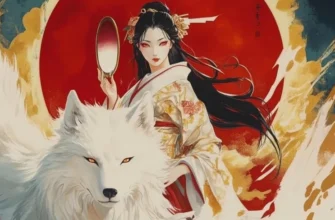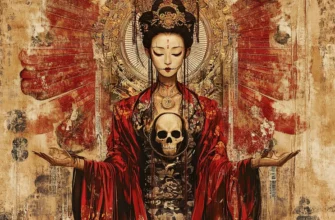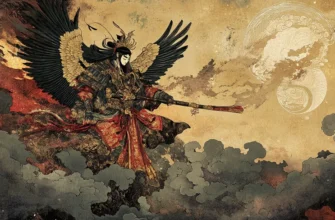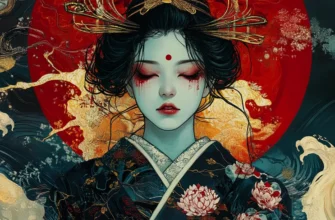Ancient Japanese culture was distinguished by its uniqueness and deep understanding of beauty. Literature, such as novels, dramas, and haiku, reflected Japanese traditions and philosophy. Aesthetics were embodied in arts such as flower arrangements and tea ceremonies. Knowledge of ancient Japanese culture can help to understand the history and significance of modern Japanese society.
Literature
The literature of ancient Japan is an important element of the country’s culture. Traditional forms of writing include kana (syllabic alphabet) and kanbun (classical Chinese). Literary genres included haiku (short poems), novels (long prose works), and dramas (theatrical plays). Most literature reflected Japanese traditions and philosophies, such as Zen Buddhism, Shintoism, and kimono. Well-known works include “Tae-batsu Monogatari” (a collection of stories from the 10th-11th centuries), “Hoyugi Monogatari” (a collection of prose works from the 11th century), and “Kokinwaka” (an anthology of poems from the 10th century).
Traditional forms of writing
Traditional forms of writing in ancient Japan included kana (a syllabic alphabet), kanji (Chinese characters that were borrowed), and kanbun (classical Chinese). Kana consisted of two alphabets: hiragana (soft) and katakana (hard), and was used to write the Japanese language. Kanbun was used to write texts in classical Chinese, which was an important language of high culture in Japan. Kanji was used to write Chinese words and borrowed Slavic terms. To this day, kana remains the basis of Japanese writing.
Kana
Kana of ancient Japan is a syllabic alphabet that originated in the 9th century. It consists of two writing systems: hiragana (soft) and katakana (hard). Hiragana is used to write the Japanese language and consists of 46 characters that represent syllables. Katakana is also used to write Japanese, but is usually used to write foreign words, transliterations, or expressive sounds. Kana is an important element of Japanese culture and is one of the oldest writing systems in the world still in use in everyday life in Japan.
Kanbun
Kanbun in ancient Japan was a writing system used to write texts in classical Chinese, which was an important language of high culture in Japan. Kanbun consisted of Chinese characters that were deciphered by Japanese readers using special symbols that indicated the reading of Chinese characters in Japanese. Kanbun was an important element in the study of Chinese culture in Japan and was used for writing literary works, documents, and traditional religious and philosophical texts. Although Kanbun is not used in everyday life in modern Japan, it remains an important element of the country’s cultural heritage.
Literary genres
Ancient Japanese literature includes a variety of genres, among which are:
Kotodama – legends and myths about ancient gods and heroes;
Monogatari – short stories on various topics, including romance, mysticism, and sacredness;
Rekishi – letters and notes containing philosophical, ethical, and literary thoughts;
Uta – poetry, including haiku, tanka, and choka, which differ in the number of syllables and themes.
In addition, ancient Japanese literature is characterized by the use of many images and symbols that have become traditional in Japanese culture, such as cherry blossoms, fairies, and monkeys.
Aesthetics
The aesthetics of ancient Japan have a long history and many different manifestations. One of the basic principles is the pursuit of simplicity and naturalness in all aspects of life.
One of the most famous manifestations of ancient Japanese aesthetics is the concept of “wabi-sabi,” which describes beauty in imperfection and the rejection of perfection. It is based on the idea that beauty should not be fleeting, but should be preserved over time and enrich the spiritual world of a person.
Another manifestation of ancient Japanese aesthetics is the cult of nature. The Japanese believe that nature has its own rhythm and harmony, and that the beauty of nature should be reproduced in art. In art, this can be seen in gardens, where every detail creates a harmonious picture, or in painting, where every moment of nature can be captured on canvas.
Philosophy of beauty
The philosophy of beauty in ancient Japan is called wabi-sabi, which reflects a unique approach to understanding beauty and its relationship with the world.
Wabi-sabi
emphasizes naturalness, simplicity, and incompleteness in everything that surrounds us. This means that things that have defects or are incomplete can be beautiful because they reflect the uniqueness of each thing and the nature of things that have worn out or been damaged over time.
Wabi-sabi also emphasizes the importance of moments that we can only perceive when we focus on them completely. It could be the moment when the wind illuminates the surface of the water or the moment when the sun disappears behind the horizon.
Overall, the ancient Japanese philosophy of beauty offers an approach to beauty that differs from the Western approach, where beauty is often associated with the ideal of symmetry and perfection. Instead, wabi-sabi reflects an ideal of simplicity and modesty that is considered beautiful because of its uniqueness and nature.
Harmony (wa)
Harmony, or wa, is an important aspect of ancient Japanese philosophy of beauty. This concept describes the ideal of harmony and coexistence between people, nature, and all other things.
Wa is considered important in many aspects of Japanese life, from architecture to cultural traditions.
Harmony is the basis of interaction between people and nature, where different aspects of the environment must exist in harmony and coexistence.
In art, wa manifests itself in simplified and balanced design, where each element is emphasized by its relationship with its surroundings. For example, in garden design, an important element is the harmony between vegetation, water, and stone, where each element has its place.
Elegance (iki)
Elegance (iki) is another important aspect of Japanese aesthetics, reflecting refined taste and style in everyday life and art.
In ancient times, the ideal of iki was associated with the aristocracy and the elite, and it implied the ability to exercise the highest level of etiquette and elegance in all aspects of life – from behavior and speech to clothing and art. However, over time, this ideal has become accessible to the general public and is considered a component of the aesthetics of every Japanese person.
Art
The art of ancient Japan was significantly influenced by the traditions and culture of China and Korea, but over time, it developed its own style that reflected the specificity of Japanese culture.
One of the most famous art forms is flower arranging (ikebana), where flowers and plants are arranged in a vase in a specific order to create an aesthetically pleasing composition. The art of calligraphy has also developed in Japan, where brushes and ink are used to write characters and paint pictures.
Japan has also developed the arts of wood carving (yakitsugi), ceramics (yakimoto), painting (nihonga), and theater (no, kabuki, bunraku). In traditional Japanese theater, actors use a minimum of movement and emotion to convey the plot and create atmosphere.
Other art forms in ancient Japan include lacquerware (urushi), sword making (katana), embroidery (nunome), and paper cutting (kirigami). Each of these art forms reflects unique aspects of Japanese culture, philosophy, and aesthetics.
Conclusions
The importance of Japanese culture in the modern world cannot be overstated. Japan is known for its contributions to science, technology, design, art, and other fields. Modern Japanese culture is a reflection of both tradition and innovation, which makes it interesting and diverse.
There are many ways to study the culture of ancient Japan. One of the most effective ways is to study primary sources such as treatises, literature, art, and other artifacts. It is also important to explore the influence of culture on the present day and the relevance of these traditions to modern requirements. Researching and studying the culture of ancient Japan can be useful for deepening our understanding of the world and developing cultural dialogue between different peoples.
